Have you also struggled to keep the different French and Belgian fourrageres apart? They all seem to be red and green, don’t they? Or is it green and red? Photos in ads and articles are often of low quality and are a poor aid for hunting down the right ones for your collection.
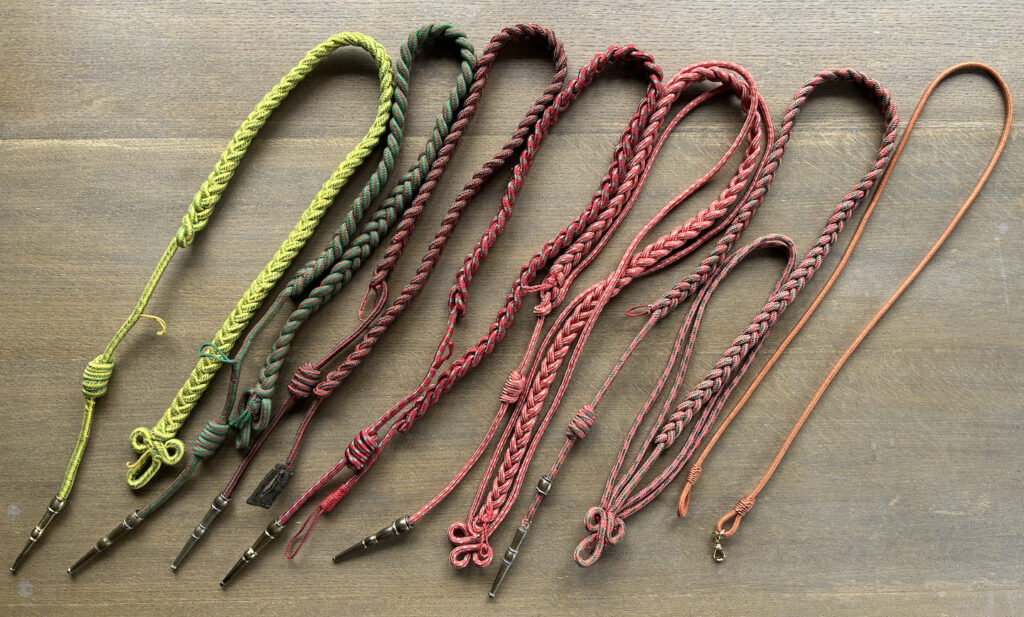
I will try to shed some light on this here.
Let’s start off with a quick identification guide, and then dive deeper into the history and details of each.
From left to right in the image above:
French Médaille Militaire, French Croix de Guerre 1914-1918, French Croix de Guerre 1939-1945, Belgian Croix de Guerre (3 variations), The Netherlands Orange Lanyard.
You see here how similar some of them look, and how different variations of the same lanyard make it harder to tell them apart.
For your WWII paratrooper mannequin, you only need 3:
1. French Croix de Guerre 39-45
2. The Netherlands Orange Lanyard
3. Belgian Croix de Guerre.
Not necessarily all three for all paratroopers, of course.
How to buy original fourrageres?
You want to get the ones made of wool thread (not shiny post-war nylon), and you want the plain brass aiguilettes on them, not the fancy ones with a crown and what not. No silver aiguilettes. And no ‘palm’ ornaments either. Make sure there are no moth holes, and that the threads of the button loops are still present and intact. Both defects are quite common, so look out for that when searching fourrageres for your collection. If you can’t see it on the photos, be sure to ask the seller about it.
The French Fourragère aux couleurs du ruban de la médaille militaire (yellow and green) and the Fourragère aux couleurs du ruban de La Croix de Guerre 1914-1918 (predominantly green, with red) were awarded to non-airborne US units. A complete list of them can be found here: https://www.usmilitariaforum.com/forums/index.php?/topic/6931-us-uniforms-with-fourrag%C3%A8re/. These do not include any Airborne units. However, I do have reference books with 101st and 82nd Airborne uniforms with both the WWI and WWII French fourrageres.1
The French WWII fourragere (predominantly red, with green) is the one you would need for your paratrooper who fought in Normandy or Southern France. The one from my collection has a wool felt pad with a button hole on one end. This is common for the original wool WWII fourrageres, but always missing on post-war examples. The French WWII fourrageres are harder to find than the WWI version.
The Belgian fourragere exists in several variations. Often, the red is faded to a pinkish-red, and the green is almost grey. Some had extra loops that went over the arm, in addition to the part that went under the armpit. The version for enlisted men was made of cotton. For officers, it was made of silk. I’m not sure if the extra loops were also reserved of officers. From reference books I have, it would seem that this was not the case. You can see this on the photos of the jackets here (all of them on the right shoulder).
It is also referred to as the Fourragère 1940, after the year Belgium was invaded in WWII.
On the right, you can see the official citation for the award of the Belgian fourragere 1940 to the 101st Airborne Division.
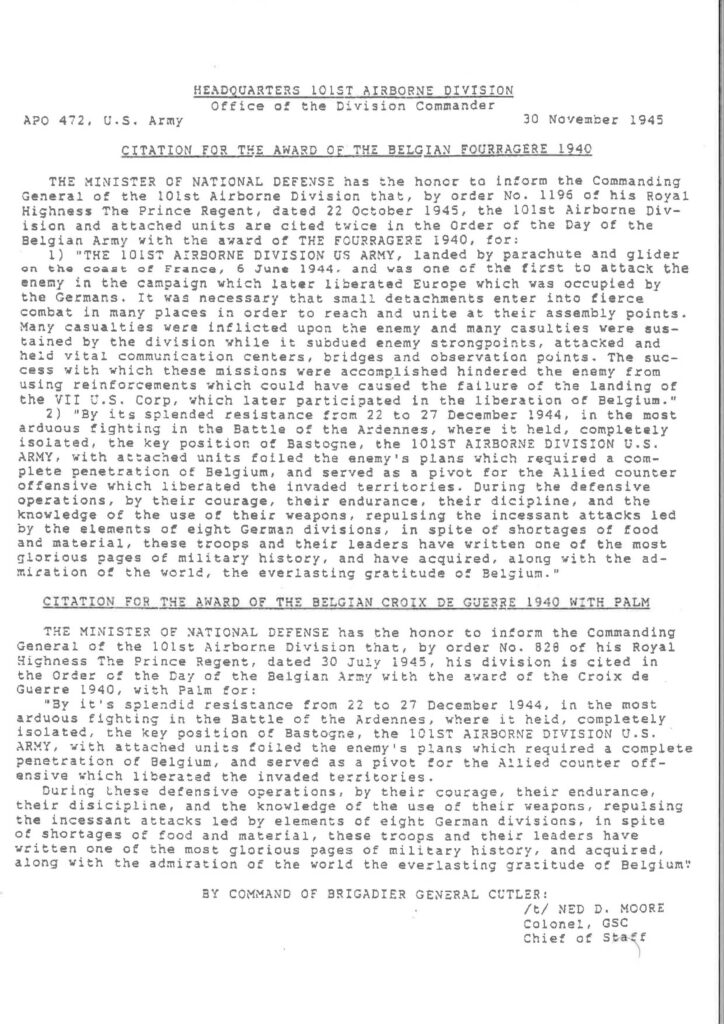
Who can wear these fourrageres?
The French fourragere may be awarded by the French Government when a unit has been cited twice for the Croix de Guerre or, after having been cited twice for the Croix de Guerre, is additionally cited twice for the Medaille Militaire. The award of the fourragere is not automatic, but must be by separate decree of the French Government.
An individual assigned, or permanently attached, to a unit which has been awarded the fourragere, but who was not present with the unit in both of the actions for which the fourragere was awarded, may wear the fourragere as a temporary part of the uniform, but only for so long as he remains with that unit.
The Netherlands Orange Lanyard may be awarded by the Netherlands Government when a unit has been cited. The award of the Orange Lanyard is not automatic, but must be by separate decree of the Dutch Government. On October 8th, 1945, the 82nd Airborne Division became the first non-Dutch unit to be awarded the Militaire Willems Orde, Degree of Knight of the Fourth Class. The lanyard could be worn by all members of the division who fought in Holland during the period it was awarded for.
An individual assigned, or permanently attached, to and present for duty with a unit during the action for which an Orange Lanyard was awarded may wear the Orange Lanyard as a permanent part of the uniform. It is not authorized for temporary wear.
The Belgian fourragere may be awarded by the Belgian Government when a unit has been cited twice for the Belgian Croix de Guerre. The award of the fourragere is not automatic, but must be by separate decree of the Belgian Government.
An individual assigned, or permanently attached, to and present for duty with a unit during both of the actions for which a fourragere was awarded may wear the fourragere as a permanent part of the uniform. Persons who were present in only one action are not authorized to wear the fourragere permanently. It is not authorized for temporary wear.2
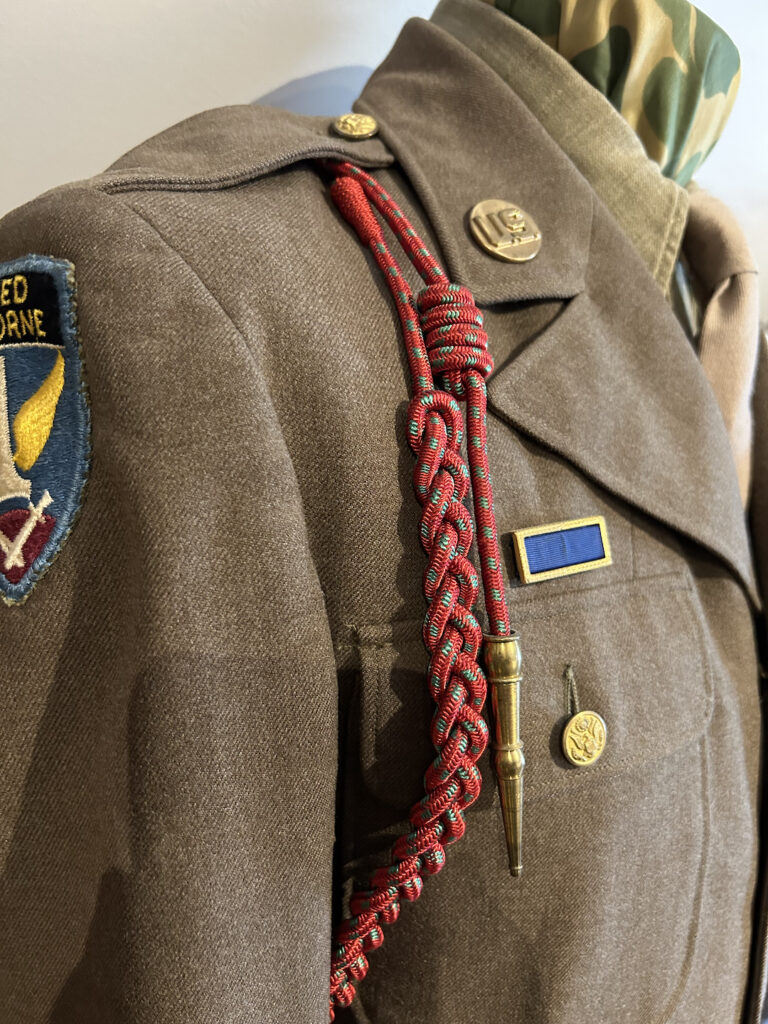
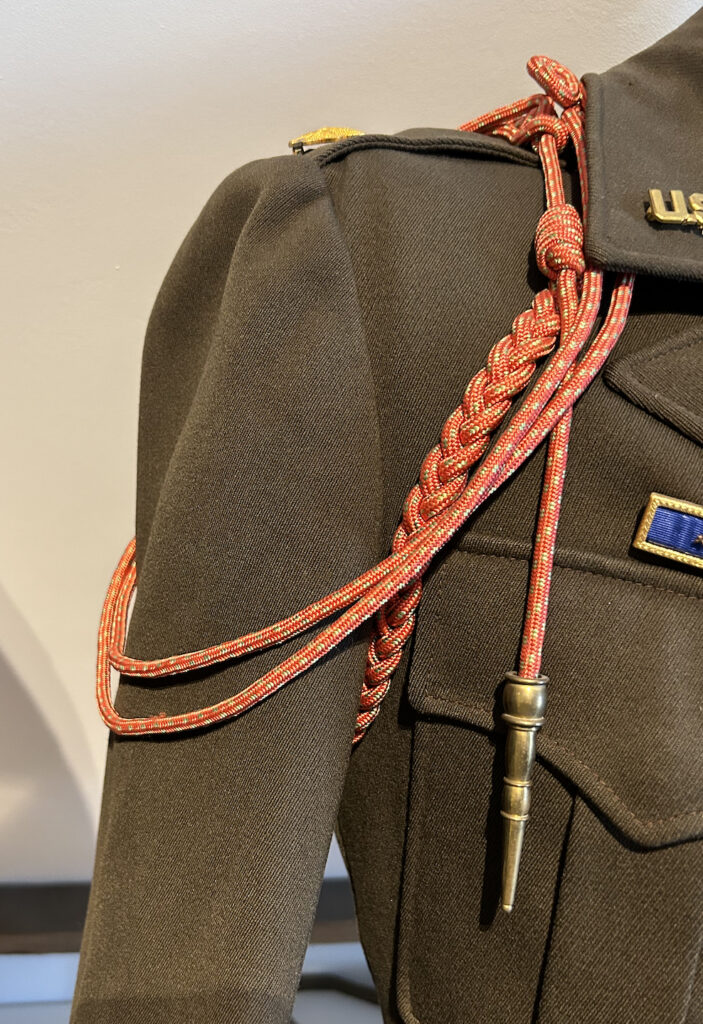
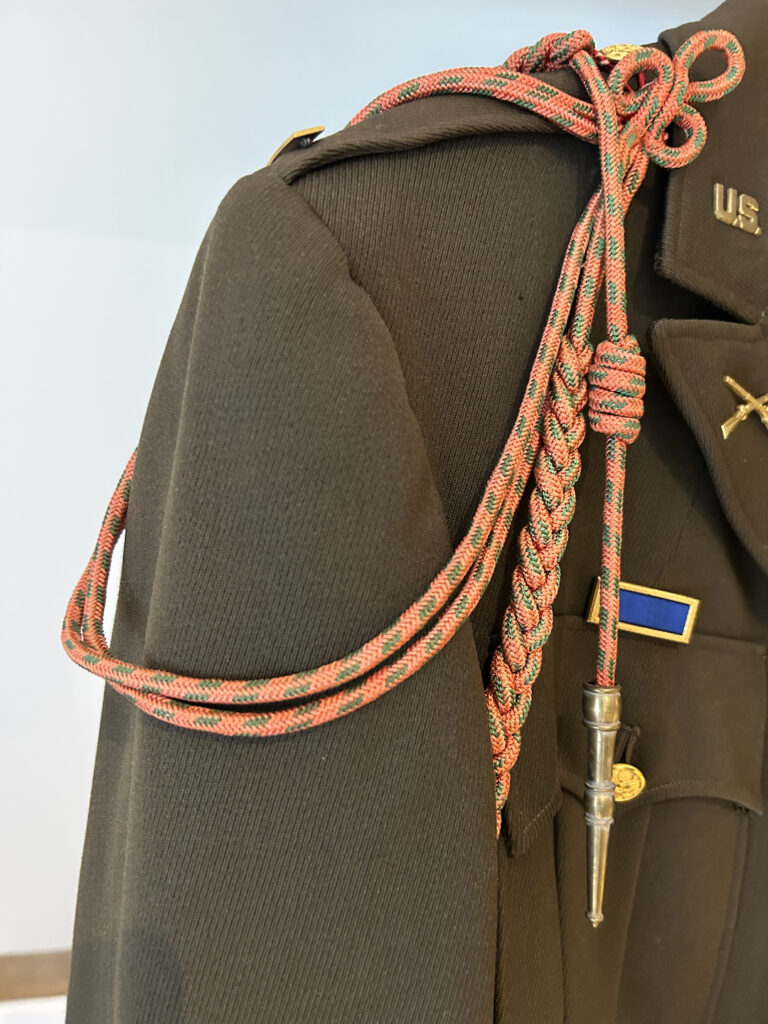
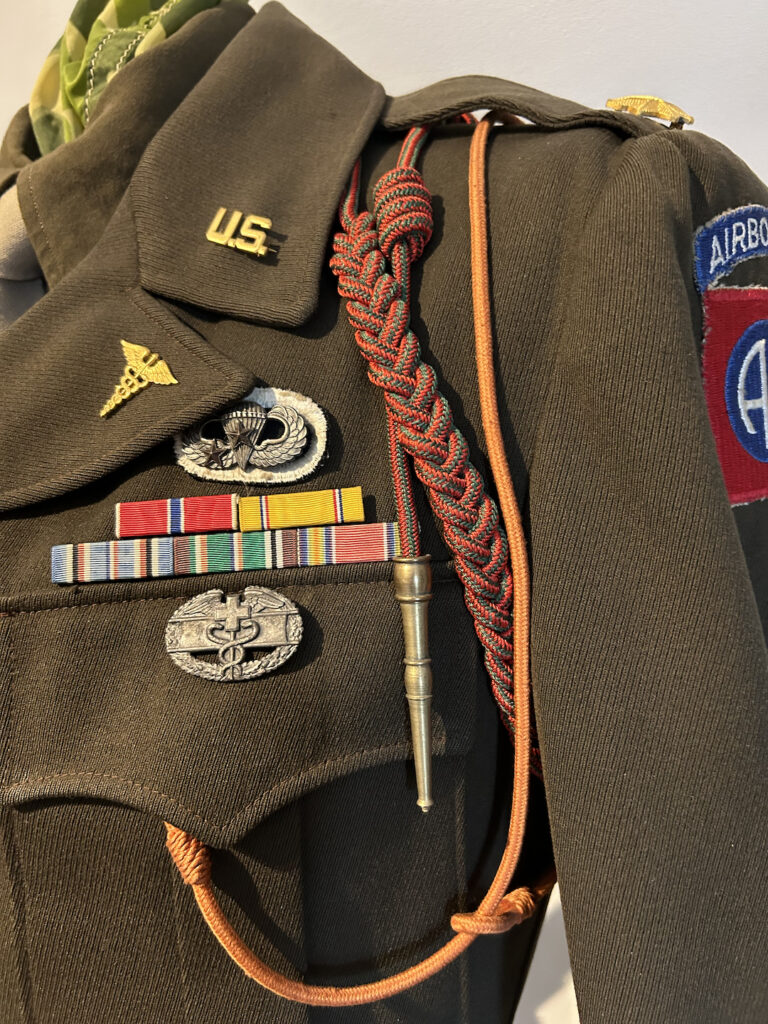
How the fourrageres are worn
As can be seen in the pictures above, the French fourragere is worn on the left shoulder, the cord passing under the armpit. Exceptions to this can be seen in many reference books1, but this is the official way. As the Belgian fourragere was also supposed to be worn on the left shoulder, but it was awarded later, it is commonly seen worn on the right shoulder when the soldier also wore a French fourragere. The Netherlands Orange lanyard is looped over the left shoulder and the swivel is placed in the pocket on the left breast.2
The origins of the fourragere
I got this from Wikipedia, but I think it’s an interesting bit of history to include here:
The origin of the award is not entirely certain, but at least two conjectural stories have been posited. The first involves Flemish soldiers serving under the Duke of Alva who were reported as having been cowardly in battle. The Duke threatened them all with hanging if they did not perform better in future engagements, and the soldiers, so insulted by the insinuation, took to wearing cords tied to large nails around their shoulders, as if to say, “Hang me by this cord and nail if you see me run from battle.” Following this, the unit’s members performed so well that the rope and nail became a badge of honor.
The other is that to the extent that an aiguillette is a form of fourragère, the wearing of armor by European knights required the use of ropes with metal tabs and a squire to cinch the armor into place—the squire would carry these cords over his shoulder, hence the association with aides de camp.3
I prefer the first explanation, as it is a more colorful story. But who knows?
As always, if you have any further information, examples or pictures you would like to share here – do send me an email.
Sources:
1 Souvenirs de G.I.’s by Daniel Blanchard, Heimdal
2 https://www.usmilitariaforum.com/forums/index.php?/topic/6931-us-uniforms-with-fourrag%C3%A8re/

